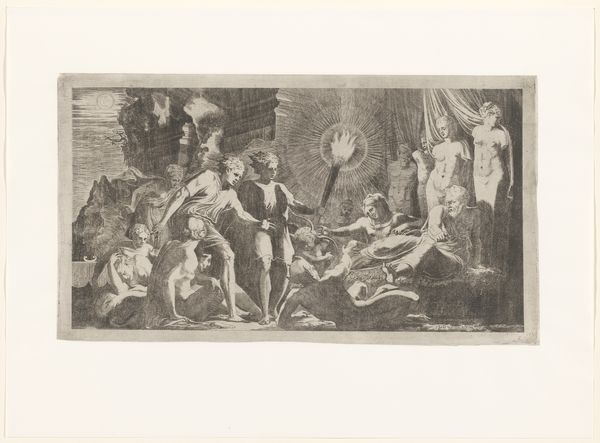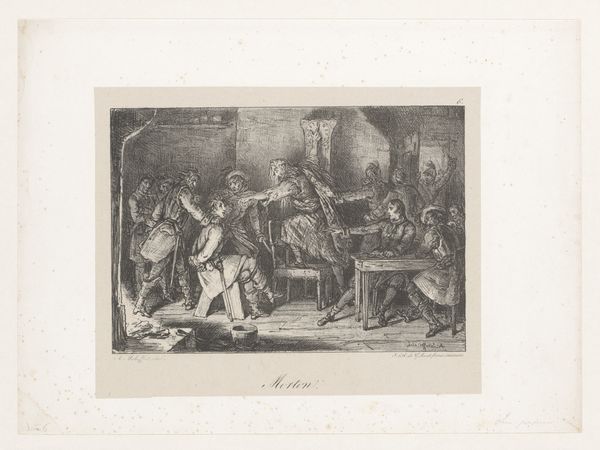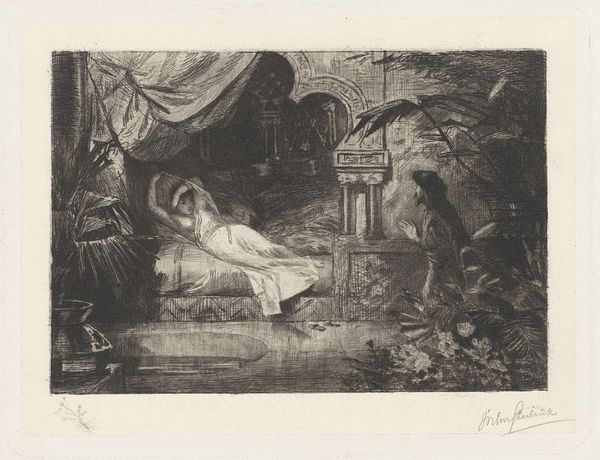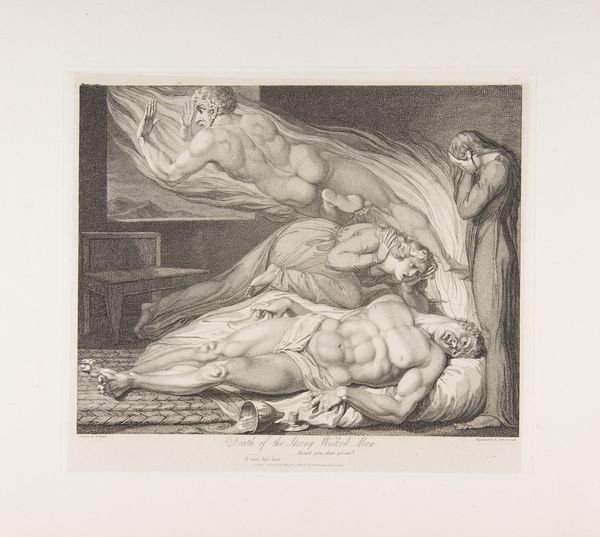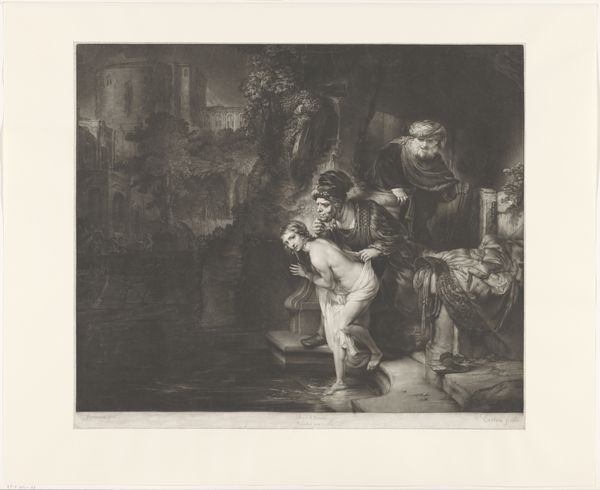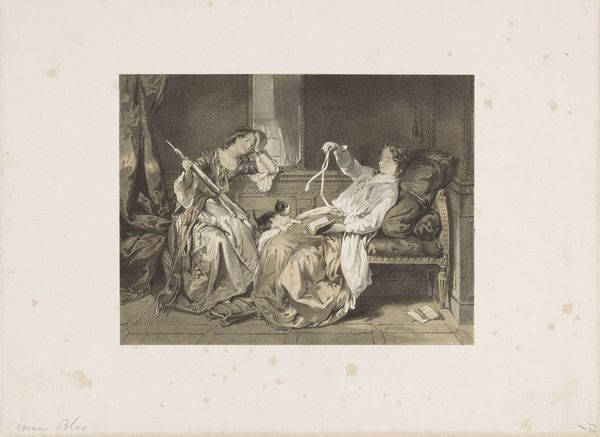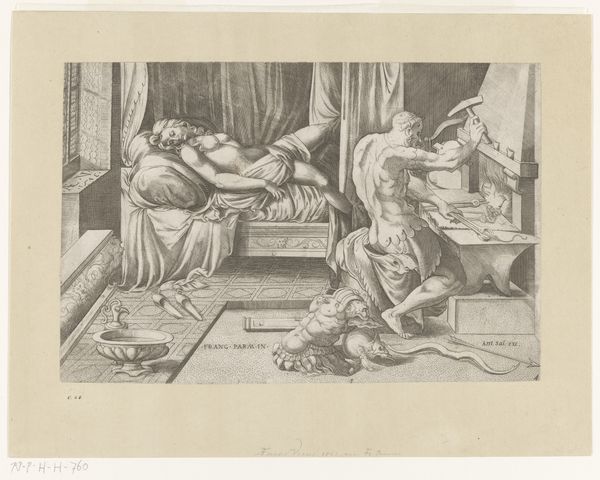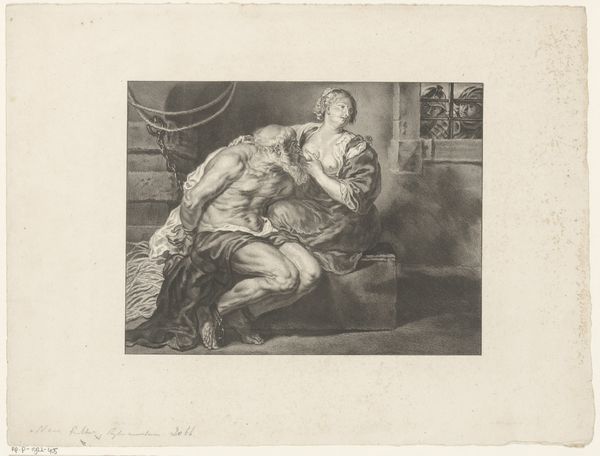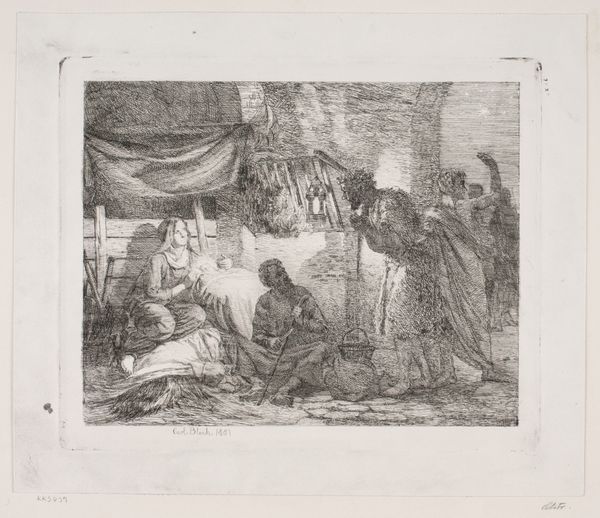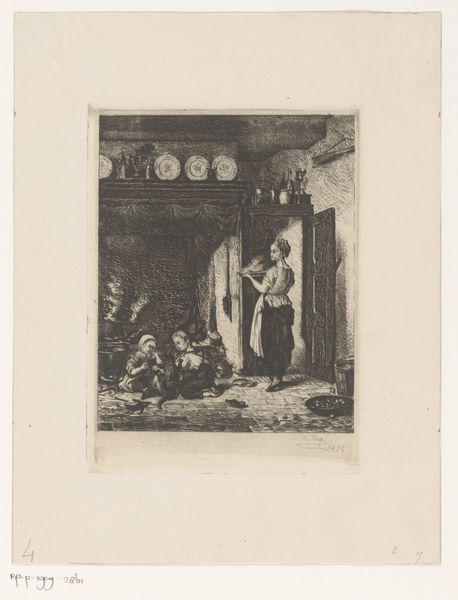
drawing, print, etching, engraving
#
drawing
#
narrative-art
# print
#
etching
#
landscape
#
classical-realism
#
soldier
#
men
#
watercolour illustration
#
history-painting
#
academic-art
#
engraving
#
realism
Dimensions: Sheet: 8 3/4 × 11 1/16 in. (22.3 × 28.1 cm) Plate: 7 1/16 × 9 1/16 in. (18 × 23 cm)
Copyright: Public Domain
Curator: Here we have François-Xavier Fabre’s print, "Marius at Minturnae," created between 1791 and 1805. The print presents a historical narrative rendered through etching and engraving techniques. What's your first take on this composition? Editor: Well, the immediate mood is undeniably tense. The contrast between the vulnerable, seated figure and the armed soldier looming over him creates a palpable sense of threat and unease within a confined space. Curator: Absolutely. Fabre’s meticulous execution, characteristic of academic art, invites careful reading of its internal structure. The receding orthogonal lines of the architecture meet near Marius. The composition leads your eye right into this fateful meeting. Note how the light, its sharp chiaroscuro, defines form but more significantly heightens dramatic tension. Editor: Agreed. I can't help but analyze what's being depicted in relationship to the themes of power, vulnerability, and justice within its historical moment. Marius, a celebrated Roman general, is here depicted as a captive, threatened with assassination. Curator: Yes, it evokes core ideals during the Enlightenment when academic styles, with Neoclassical ideals, became vehicles for didactic art, meant to illustrate important histories and educate the viewer in morality through the lives of exemplars from the classical age. Editor: It's impossible to divorce the narrative from the sociopolitical circumstances. Think of how stories of political exiles would have resonated with audiences navigating revolutionary change. Is Marius a symbol of resistance against tyranny, or perhaps a warning about the fleeting nature of power? I think Fabre leverages a historical story to talk about present anxieties. Curator: Perhaps both readings are equally valid, informing one another. The effectiveness of this composition rests on the balance that is struck. Editor: Looking at the composition this way provides deeper insight into how historical narratives are molded and interpreted through distinct ideological frameworks. Curator: Indeed, this artwork serves as an illustration not just of classical events but, rather, of the timeless concerns of governance and individual resilience.
Comments
No comments
Be the first to comment and join the conversation on the ultimate creative platform.
